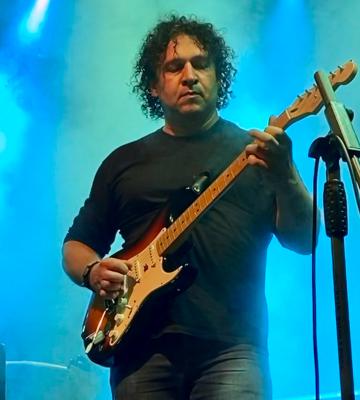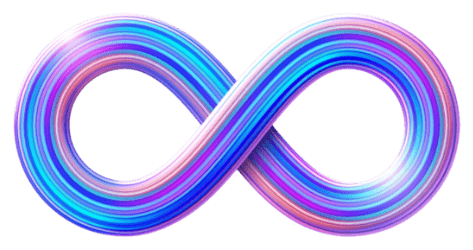More
- ImprovisationLEVEL 4Have you ever felt like you were stuck in a rut while improvising? This lesson will open your eyes!
- Improvisation: BreathingLEVEL 4Have you ever felt like you were stuck in a rut while improvising? This lesson will open your eyes!
- Phrasing & ImprovisationLEVEL 2How to create phrases and the call & response concept.
- Fast Modern RockLEVEL 7Lesson covering use of slap, legato, tapping, slide, whammy bar and hybrid picking techniques in a modern rock solo.
- Fast Country LeadLEVEL 6Country style solo utilizing hybrid picking technique.
- Fast Racer RockLEVEL 6A cool fast racing car tune that focus on precise timing and groove!
- Fast Country RhythmLEVEL 4An uptempo pick & strum rhythm that will give your hands a workout!
- Fast Country BoogieLEVEL 6An uptempo chicken picking rhythm and solo
- Fast Triplets FunkLEVEL 4Fast funk rhythm work based around eighth note triplets in the style of Maceo Parker, James Brown, Stevie Ray Vaughan...
Feedback
 Ivan Zecic18th April 2010
Ivan Zecic18th April 2010Thank you both!
 Daniel Realpe17th April 2010
Daniel Realpe17th April 2010you have an amazing vibrato and tone in your fingers!
 Ivan Milenkovic17th April 2010
Ivan Milenkovic17th April 2010Great stuff, modern and rocking!

 Ivan Zecic17th April 2010
Ivan Zecic17th April 2010Yes, it is important...
Thanks! Daniel Realpe16th April 2010
Daniel Realpe16th April 2010bendings is where it's at!
and you got it! Ivan Zecic13th April 2010
Ivan Zecic13th April 2010Thanks man!
I love your lessons too, they are among my favourite ones!
 Piotr Kaczor13th April 2010
Piotr Kaczor13th April 2010Cool lesson, Ivan! Your playing always amaze me!
 Ivan Zecic13th April 2010
Ivan Zecic13th April 2010Thanks!
There will be more interesting topics...
 Vasilije Vukmirovic13th April 2010
Vasilije Vukmirovic13th April 2010GReat topic and great application of concept!
 Ivan Zecic13th April 2010
Ivan Zecic13th April 2010I really do enjoy it!

Thanks a lot! Santiago Diaz Garces13th April 2010
Santiago Diaz Garces13th April 2010I can really note how you enjoy you're playing. And that is so important when you're trying to teach something. Great lesson Ivan!
 Ivan Zecic12th April 2010
Ivan Zecic12th April 2010I'm really glad that you like it! Thank you!
 Keep_Rocking12th April 2010
Keep_Rocking12th April 2010Man! Your vibrato is just amazing!
Love your lessons! Lian Gerbino12th April 2010
Lian Gerbino12th April 2010lovely man! awesome playing!
 Zsolt Galambos12th April 2010
Zsolt Galambos12th April 2010Your phrasing is amazing, man! Great lesson!

 Ivan Zecic12th April 2010
Ivan Zecic12th April 2010Thanks!
 Hisham Al-Sanea11th April 2010
Hisham Al-Sanea11th April 2010nice improvisation
 Ivan Zecic11th April 2010
Ivan Zecic11th April 2010Thank you all!

 Adrian Figallo11th April 2010
Adrian Figallo11th April 2010very good man!
 thefireball11th April 2010
thefireball11th April 2010Dang you're good!!!!

 Gerardo Siere11th April 2010
Gerardo Siere11th April 2010Great and powerful lesson Ivan!
 Keilnoth11th April 2010
Keilnoth11th April 2010That's rock !

Love your lessons Ivan ! kaznie_NL11th April 2010
kaznie_NL11th April 2010Very effective way of playing man, you don't use many notes to tell the story, very cool

 Marius Bob11th April 2010
Marius Bob11th April 2010cool lesson.
strong bendings and vibrato Bogdan Radovic11th April 2010
Bogdan Radovic11th April 2010Very effective leads approach!

 Kristofer Dahl11th April 2010
Kristofer Dahl11th April 2010Great to see a new lesson from you Ivan - awesome playing and useful soloing approach!
Practicing Peers
REC Takes
- Total views: 0
- Member views: 0
- Guest views: 0
- Lesson
- My notes
Have you ever felt like you were stuck in a rut while improvising? Let me introduce you to improvisation concepts which will open your eyes, so you'll never ever have to repeat the same thing twice in your playing!
In this lesson we are going to work on contrast between slow and fast playing. There are many different types of contrast and that's why it's so popular in art in general, but today we are going to stick to this slow/fast type of contrast.
It is a really simple thing and it can be extremely easy to apply it. You don't always have to make a huge difference between slow and fast. It doesn't have to be extremely slow (like for instance a whole note) and extremely fast (16th triplets). It can also be barely noticable. You don't need to make it so obvious to the audience. You can use this concept just for yourself, as a guide which will tell you: play this part slower and then play the second part just a bit faster. But of course, you can make a huge difference between parts, it's all just a matter of your choice, and both ways work!
You can make a really small difference between parts, you can make a bigger difference, and you can make a huge difference. I tried to cover all of these "modes" in this lesson, so you are able to see all the examples of this slow/fast contrast.
There's one more thing I'd like to mention. It doesn't always have to be slow-fast-slow-fast-slow-fast type of order. You can change that too. Be creative! I changed the particular order at the end of the solo. I played a faster part and then I played two slower parts, because I wanted to keep the last fast part for the end.
You can really spend hours playing only with this idea. Be creative and try to get the most out of it!
Have fun!
IvanFrom this course:
Jump to start: Home or `s` , you can also click/tap the lesson part again (the numbers above player)
Go to next part: PageUP or End.
Volume: ArrowUp / ArrowDown keys
Go to any part: Number keys (combinations also possible)
Pause or play: `k` or space key
Fullscreen: `f`, esc to close
Increase / decrease speed : `+` or `-`







